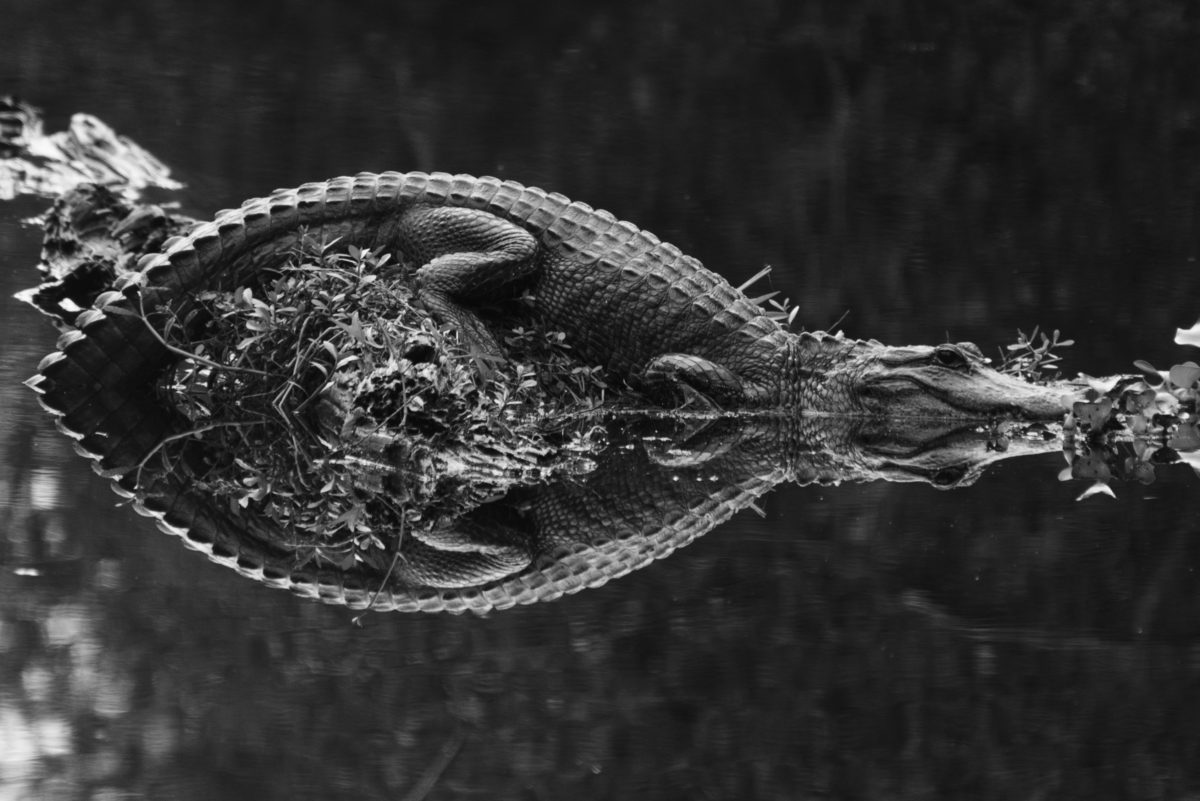Who says a portrait image has to be shot in portrait orientation, or that a landscape photo must be shot using landscape orientation? Rules are meant to be broken, and they call it “artistic license” for a reason. I would estimate that a third of my people images are shot in landscape (horizontal) orientation, and that a third of my landscape images are shot in portrait (vertical) orientation. It’s always a good idea to shoot at least a few frames in both orientations so you can decide later which ones work best for your artistic vision. Let’s take a look at a few examples.
 Laura is one of my all-time favorite models (she also creates all her own costumes and does her own hair and makeup), and she looks great framed in any orientation, but I think her remarkable inventiveness is shown to good advantage in this composition using landscape orientation. Buy this photo
Laura is one of my all-time favorite models (she also creates all her own costumes and does her own hair and makeup), and she looks great framed in any orientation, but I think her remarkable inventiveness is shown to good advantage in this composition using landscape orientation. Buy this photo
It’s a cliché that people pictures should be composed vertically, so that we can fill the whole frame with the model’s head or full body. A lot of the time this portrait orientation works well. But there are some good reasons to shoot people images using landscape orientation as well as portrait orientation.
First, sometimes the model’s pose or the environmental elements around the model favor a horizontal image. When traveling, I like to shoot environmental portraits that show us more than just the person by including elements of his or her home, livelihood, or lifestyle.
Second, we need to think about how the image will be used. If I’m shooting publicity photos for musicians, for example, I know they need horizontal images at least as often as vertical images, so as to meet the requirements for the venues and promoters with whom they work. Magazines and billboards often require landscape orientation, as well. Even more prosaic uses of our photos, such as Facebook or LinkedIn cover photos, must be oriented horizontally.
Third, some portraits just cry out artistically to be framed in landscape orientation. The image of the model Laura, above, for example, just works better to my eye in horizontal format, because the negative space behind her leads the viewer’s eye to admire her remarkably creative style, and leaving the lower part of her body and her dress out of the image allows us to focus on her expressive face.
By the same token, there are some good reasons to shoot landscape images in portrait orientation.
First, there could be some limitations to the left or right of the frame that, when shot horizontally, could distract from the power of the image we want to create. Think about a coastal landscape with a glorious sunset sky and delightful foreground elements such as rocks with water flowing around them, but to the left of our vantage point there’s an unattractive pile of litter. Frame the image in portrait orientation and avoid the problem.
Second, there are publication media where portrait orientation is required. Knowing where the image is likely to be published will dictate the orientation in which we shoot. A card or trifold brochure, for example, will likely require a vertical shot.
Third, again, consider your creative vision. This night landscape of the Milky Way over Yosemite National Park’s Half Dome also worked beautifully in the more traditional landscape orientation, but here I shot the same scene using portrait orientation to frame the granite mountains with a circle of trees and to create a leading line using the Milky Way’s galactic core to bring the viewer’s eye around the valley’s landforms and the night sky.
 This night shot of the Milky Way over Yosemite Valley works especially well in portrait orientation because the pine trees create a frame around the leading line of the galactic core. Buy this photo
This night shot of the Milky Way over Yosemite Valley works especially well in portrait orientation because the pine trees create a frame around the leading line of the galactic core. Buy this photo
Whenever possible, remember to mix it up and shoot with the non-standard orientation for at least a few frames. You may find your best shots–and the most marketable ones for placement in certain forums–are the ones you make using the unconventional orientation.
Do you have a favorite image that you shot using the opposite orientation from the expected one? Please share your experiences here.
Want to learn some more photographic techniques? Here’s a list of all my posts dealing with the technical aspects of travel photography: http://www.to-travel-hopefully.com/category/techniques/




















